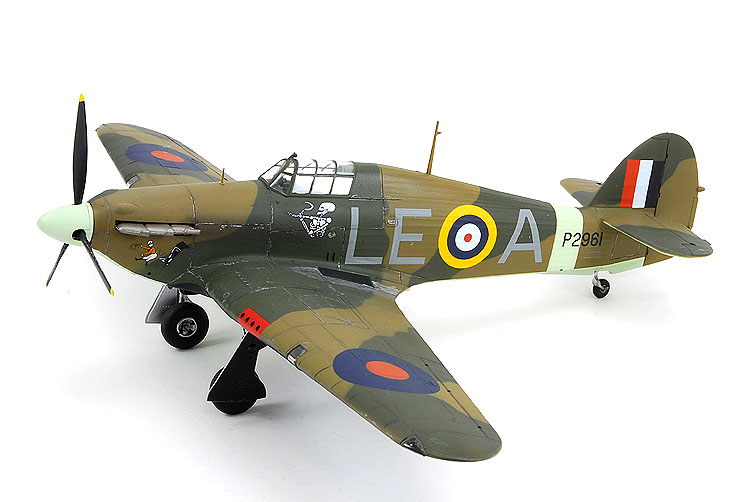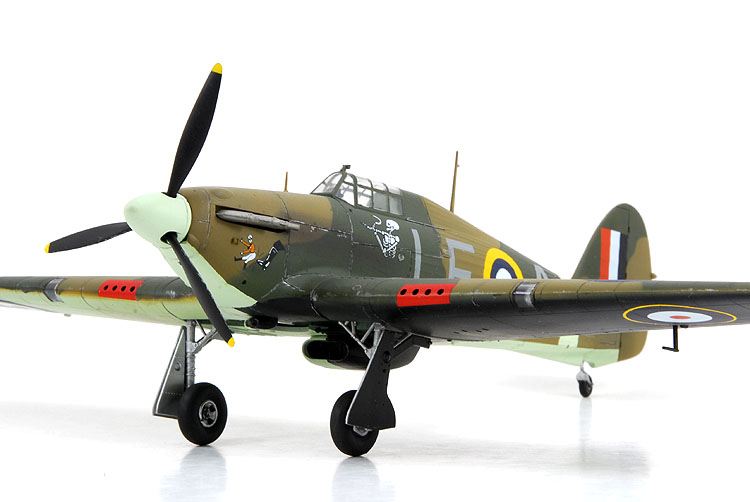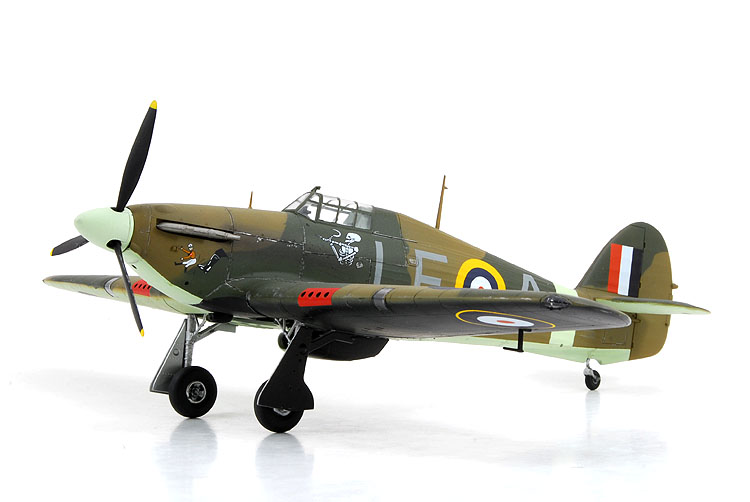

In an example of Murphy's Law, when I originally bought the decals for this model McKnight's Hurricane could only be found an a massive Battle of Britain multi-pack. Just as I finished this model a plethora of McKnight decals came on to the market.
Kit:
Aftermarket:
Date:
Hasegawa (09592)
Aeromaster decals (SP48-05)
2008
Sadly, today’s generation doesn’t recognize our veterans and war heroes with the respect they deserve. Back in the 1950s however, when the city of Calgary was growing, city officials
named several major roads around the airport in honour of our veterans – McCall, Barlow, McKnight – the later was Calgary’s own Battle of Britain ace and the fifth highest scoring
Canadian in the Second World War.
Born in Edmonton and raised in Calgary, William McKnight was a rebellious young man who’d crashed his father’s car while still in high school, had a turbulent relationship with his
girlfriend, and was on the verge of being expelled from his University medical school class when he joined the Royal Air Force in February 1939.
McKnight’s troublesome reputation went with him to England, but he earned his pilot’s wings and was posted to No. 242 Squadron on May 6, 1940. Within weeks P/O McKnight was in France
with the British Expeditionary Force as a reserve pilot. It was here that McKnight had his first taste of combat, and scored his first victories.
As France fell McKnight was back in England, recovering from sleep deprivation, and numerous ailments.
Meanwhile, 242 Sqd. was rebuilding following a mauling over France, with Squadron Leader Douglas Bader assuming command. Recognizing McKnight’s aggression and skills, Bader selected
the 21 year old as his wingman. Together, Bader and McKnight were a powerful team. On August 30, 1940 the Luftwaffe attacked RAF Duxford. Bader scored two victories. McKnight had
three.
On January 12, 1941, McKnight and another 242 Sqd. pilot were flying an offensive mission against targets of opportunity in France when they turned to attack a German E-boat in the
channel. Anti-aircraft fire and an attacking Messerschmitt Bf 109 caused the pair to separate and McKnight was never heard from again. The general belief is that McKnight was shot
down by the pilot of the attacking Messerschmitt, who was in turn, killed only a short while later.
At the time of his death, 22 year old F/O McKnight had 17 victories to his credit, as well as the Distinguished Flying Cross and Bar.
As a Calgarian, I’d always wanted to build a really nice Hurricane in McKnight’s markings. True to form however, I bought the decals and sat on them for more than a decade before
getting the confidence to risk using my ultra-rare Aeromaster decal sheet and start building. No sooner had I finished than IPMS Canada issued a decal sheet that included McKnight’s
markings. Pacific Coast Models released 1/32nd scale Hurricane kit with McKnight’s markings and Italeri soon followed suit with a 1/48th scale kit. Now everyone can have a McKnight
Hurricane too.
Moulded in Hasegawa’s typical medium grey styrene, this kit features beautifully thin recessed panel lines. To some people, this is offset by the exaggerated scalloping on the fabric
portions.
The whole goal of this model was to finish my model in McKnight’s markings without screwing up the decals. As a result, I went for an out of the box build. Opening the canopy or
engine cowlings would simply hide the three pieces of artwork.
Although decals are now available from IPMS Canada or Italeri, my markings date back to 1996, when Aeromaster put out a massive decal sheet and information booklet for 20 RAF and
Luftwaffe fighters from the Battle of Britain.
Even though they were old, the Aeromaster decals worked flawlessly – much to my great relief.

There are many interpretations as to what McKnight's Hurricane looked like, but they are all guesses as there are only two known pictures of P2961 and they both show only the cockpit area.

